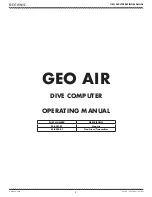
This parameter is a symbolic reference to an address, address range, file, or other
value.
Note that if no default file was defined by executing the command display
local_symbols_in --SYMB--, or with the cws command, a source file name
(<FILE>) must be specified with each local symbol in a command line.
Symbols may be:
•
Combinations of paths, filenames, and identifiers defining a scope, or
referencing a particular identifier or location (including procedure entry and
exit points).
•
Combinations of paths, filenames, and line numbers referencing a particular
source line.
•
Combinations of paths, filenames, and segment identifiers identifying a
particular PROG, DATA or COMN segment or a user-defined segment.
The Symbolic Retrieval Utilities (SRU) handle symbol scoping and referencing.
These utilities build trees to identify unique symbol scopes.
If you use the SRU utilities to build a symbol database before entering the
emulation environment, the measurements involving a particular symbol request
will occur immediately. If you then change a module and reenter the emulation
environment without rebuilding the symbol database, the emulation software
rebuilds the changed portions of the database in increments as necessary.
Further information regarding the SRU and symbol handling is available in the
Symbolic Retrieval Utilities User’s Guide. Also refer to that manual for
information on the HP64KSYMBPATH environment variable.
The last symbol specified in a display local_symbols_in --SYMB-- command, or
with the cws command, is the default symbol scope. The default is "none" if no
current working symbol was set in the current emulation session.
You also can specify the current working symbol by typing the cws command on
the command line and following it with a symbol name. The pws command
displays the current working symbol on the status line.
Display memory mnemonic also can modify the current working symbol.
Chapter 11: Emulator/Analyzer Interface Commands
--SYMB--
386
Summary of Contents for 64780A
Page 1: ...Graphical User Interface User s Guide MC68360 68EN360 Emulator Analyzer HP 64780A ...
Page 20: ...xx ...
Page 21: ...Part 1 Quick Start Guide 1 ...
Page 23: ...1 Getting Started 3 ...
Page 45: ...Part 2 Using The Emulator 25 ...
Page 47: ...2 Plugging into a Target System 27 ...
Page 55: ...Chapter 2 Plugging into a Target System Plugging into the Motorola QUADS Target System 35 ...
Page 59: ...3 Starting and Exiting HP 64700 Interfaces 39 ...
Page 69: ...4 Entering Commands 49 ...
Page 103: ...5 Configuring the Emulator 83 ...
Page 122: ...102 ...
Page 123: ...6 Using the Emulator 103 ...
Page 193: ...7 Using the Emulation Bus Analyzer How to record program execution in real time 173 ...
Page 249: ...8 Making Software Performance Measurements 229 ...
Page 279: ...9 Making Coordinated Measurements 259 ...
Page 295: ...Part 3 Reference 275 ...
Page 297: ...10 Setting X Resources 277 ...
Page 312: ...292 ...
Page 313: ...11 Emulator Analyzer Interface Commands 293 ...
Page 391: ...set Chapter 11 Emulator Analyzer Interface Commands set 371 ...
Page 405: ... SYMB Chapter 11 Emulator Analyzer Interface Commands SYMB 385 ...
Page 422: ...402 ...
Page 460: ...440 ...
Page 461: ...Part 4 Concept Guide 441 ...
Page 463: ...13 Concepts of the EMSIM and EMRAM 443 ...
Page 471: ...Part 5 Installation and Service Guide 451 ...
Page 473: ...14 Installation 453 ...
Page 491: ...Chapter 14 Installation Verifying the Installation 471 ...
Page 493: ...15 Installing Updating Emulator Firmware 473 ...
Page 500: ...480 ...
Page 516: ...496 ...
Page 540: ...520 ...
















































